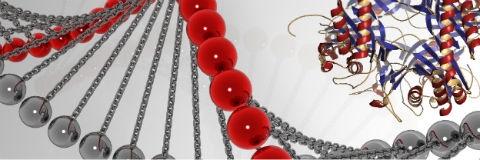DNA Manipulation
1. DNA cloning
- Restriction Free (RF)
- Transfer-PCR (TPCR)
2. DNA mutagenesis
- Single and multiple point mutations
- Deletion and insertion
- Shuffling
Protein Expression
Target genes of interest cloned in the appropriate expression vectors are introduced into host cells. To increase the probability that a given protein will be expressed in soluble, active form, and in high yield several expression systems are used. These include bacterial system and three eukaryotic systems, such as yeast, insect and mammalian cells. Expression is screened on a small scale in 4-10 ml cultures and soluble and insoluble cellular fractions are analyzed by SDS-PAGE for protein expression. Once optimal conditions have been determined, large-scale cultures (1-5L) are used to obtain larger amounts of protein.
Protein Purification
Proteins are purified from a variety of different hosts by commercial and specialized chromatographic procedures utilizing the various refrigerated FPLC systems. The unit provides assistance in the following steps:
- Design of protein constructs and experimental planning
- Concentration of large-scale cultures and buffer exchange
- Protein purification
- Removal of tags
- Protein concentration and stabilization
- Protease treatment of proteins
- Refolding of proteins
- Protein characterization
Protein Crystallization and Structure Determination
The Crystallography unit is offering services in protein crystallization, structure determination and analysis, by X-ray Crystallography.
The aim of protein crystallization is to produce well-ordered protein mono-crystals large enough to diffract X-ray beam. Finding the right crystallization conditions is a tedious try-and-error process involved in exploring different precipitants, examining different crystallization methods and varying temperatures. Once a suitable crystal is obtained, X-ray data is collected either at an in-house source or at a Synchrotron facility. Following data processing, the 3D structure of the protein is determined, refined, and evaluated using different computational programs. We perform detailed comparative sequence-based-structure analysis of related proteins and correlate the protein structure to its function, biochemical findings and biological importance.



